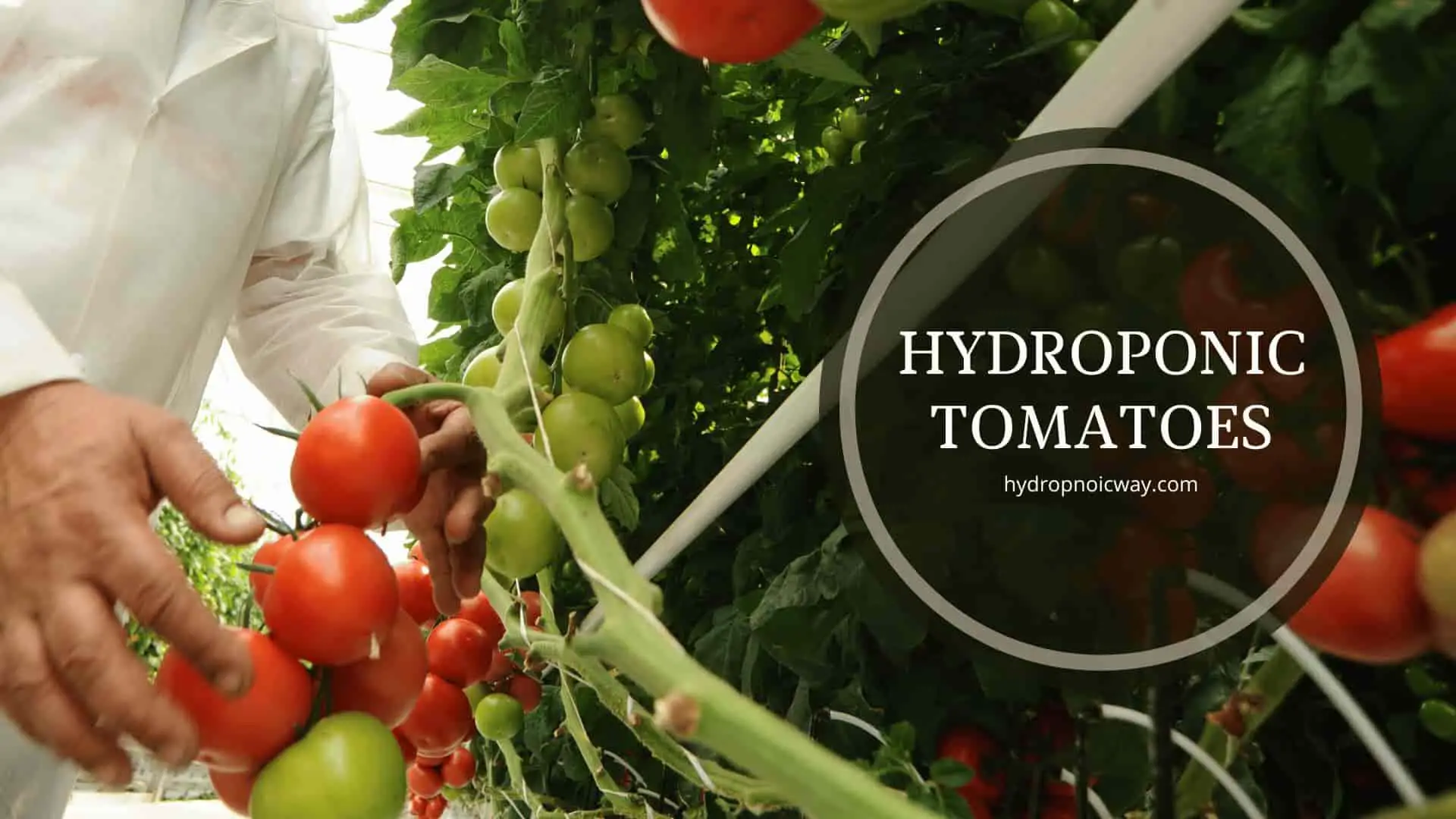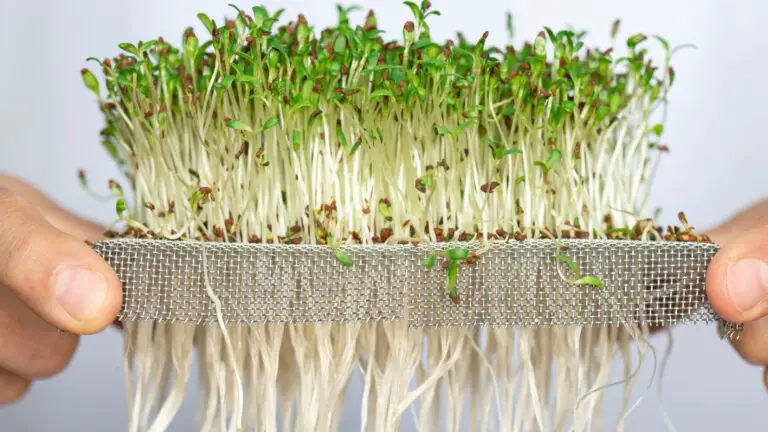How to Grow Hydroponic Tomatoes Without Pollination
Disclosure: Your purchases through our links may earn us a small commission, supporting our site’s ability to provide valuable information to our readers. Rest assured, it won’t impact your price. Thank you for your support.
Hydroponic tomatoes are a great way to get your daily dose of vitamins and minerals. But can they grow without being pollinated?
The answer is yes – hydroponic tomatoes can grow without being pollinated. However, the yield will be lower than if they were pollinated.
In this blog post, we will discuss the benefits of hydroponic tomatoes and how to get the most out of them!
What Are Hydroponic Tomatoes?
Hydroponic tomatoes are hydroponically grown regular tomatoes, meaning they are grown without soil. Tomato plants are fed with nutrient solutions that provide the necessary minerals and vitamins for growth. This method is highly efficient in terms of yield and water usage.
Related: How to Set Up a Nutrient Film Technique (NFT) Hydroponic System?
Benefits of Hydroponic Tomatoes
The most significant benefit of hydroponic tomatoes is that they can be produced in any environment. Hydroponic tomatoes can thrive indoors or outdoors with the necessary nutrients and conditions. It makes hydroponics an excellent option for those living in urban areas with limited access to soil.
Here are several benefits of growing tomatoes in hydroponic systems:
- Water and space efficiency: Hydroponic systems use less water than traditional soil-based growing methods, as the water can be recirculated and reused. They also use less space, as the plants can be grown in a smaller area using vertical systems or stacking.
- Year-round production: Using hydroponic systems, gardeners can cultivate plants in a controlled environment, indoors or in a greenhouse.
- Increased productivity: Hydroponic systems can often produce higher yields than traditional soil-based growing methods due to the precise control over the growing environment and the availability of nutrient-rich water to the plants at all times.
- Consistency: Hydroponic systems can produce consistently high-quality fruit, as the plants receive a steady supply of nutrients and the growing environment can be carefully controlled.
- Reduced pests and diseases: Pests and diseases can be a significant problem in traditional soil-based growing systems, but they can be much easier to manage in a hydroponic system.
- Reduced environmental impact: Hydroponic systems can have a lower environmental impact than traditional soil-based growing methods, as they use fewer natural resources and produce less waste.
What could reduce hydroponic tomato yield?
Several factors can potentially reduce hydroponic tomato yield. Some common ones include:
- Poor nutrient solution: The nutrient solution is the lifeblood of a hydroponic system, and if it is not adequately balanced or supplemented, it can lead to reduced yields.
- Pest or disease issues: Pests and diseases can be significant problems in hydroponic systems, especially if they are not adequately controlled.
- Environmental factors: Temperature, light, and humidity can all impact tomato yield in a hydroponic system. If the plants are not receiving enough light, or if the temperature or humidity levels are too high or too low, it can lead to reduced yields.
- Poor plant health: If the plants are not healthy for other reasons, such as being stressed due to over- or under-watering or being root-bound, it can also lead to reduced yields.
- Genetics: Finally, the genetics of tomato plants can also play a role in yield. Some varieties may be more productive than others.
Hydroponic systems such as Neutrient Film Technique (NFT) gives you a better control of these variables.
How should you select the best tomato variant for hydroponics?
There’s no perfect variant for hydroponics. But you can consider the below factors before choosing one.
- Size and shape: Some tomato varieties may be better suited to hydroponic systems based on their size and shape. For example, determinate varieties that grow to a specific size and then stop may be more suitable for smaller hydroponic systems. In comparison, indeterminate varieties that continue to grow and produce fruit throughout the season may be better suited to larger systems.
- Yield: Consider the expected result of the array. Some varieties are known to be more productive than others, so choosing a high-yielding type may increase the chances of success in a hydroponic system.
- Disease resistance: Some tomato varieties are more resistant to common diseases and pests that can be a problem in hydroponic systems. Choosing a disease-resistant type may reduce the risk of crop loss due to these issues.
- Flavor: Finally, consider the taste of the tomato variety. Some varieties may be more flavorful or have other desirable characteristics, such as sweeter or firmer flesh, making them a good choice for a hydroponic system.
It may be helpful to research different tomato varieties and their characteristics to determine which may be the best fit for a particular hydroponic system.
The best tomato varients to grow in hydroponic systems are beefsteak, vine tomato, cherry or cocktail, and grape. Beefsteak and Vine Tomatoes yield better, while Grape and Cherry are more sweeter.
What’s the best nutrient mix and pH level for hydroponic tomato cultivation?
The best nutrient mix and pH level for hydroponic tomato cultivation will depend on the specific needs of the plants and the growing conditions. Tomatoes grow best in a slightly acidic environment with a pH of around 6.0 to 6.8. However, the specific nutrient mix and pH level may need to be adjusted based on the particular needs of the plants and the growing conditions.
As for thenutrient mix, tomatoes require a range of essential nutrients to thrive, including macronutrients (nitrogen, phosphorus, potassium, calcium, sulfur, and magnesium) and micronutrients (boron, chlorine, copper, iron, manganese, molybdenum, and zinc). It is essential to use a nutrient mix formulated explicitly for hydroponic tomatoes that provides the right balance of these nutrients.
It is also necessary to regularly monitor the nutrient mix and pH level and make adjustments to ensure that the plants receive the right balance of nutrients and that the pH is within the optimal range. This can typically be done using test kits or sensors that measure the nutrient levels and pH in the nutrient solution.
There are several ways to maintain warmth for hydroponic tomatoes during the cold season:
- Use a heating source: One option is to use a heating source, such as a space heater or heating pad, to maintain a consistent temperature within the optimal range for tomato growth.
- Use a greenhouse: Greenhouses can effectively maintain warmth for hydroponic tomatoes during the cold season, as they can provide insulation and protect the plants from the elements.
- Use a grow tent: Grow tents can create a controlled environment for hydroponic tomatoes, allowing for precise temperature control and protection from the elements.
- Use blankets or other insulating materials: Covering the hydroponic system with blankets or other materials can help retain heat and protect the plants from the cold.
- Use a temperature controller: A temperature controller can automatically regulate the temperature within the optimal range for tomato growth, ensuring consistent and optimal conditions for the plants.
It is essential to monitor the temperature regularly and make adjustments to ensure that the plants receive the right amount of warmth.
How to grow hydroponic tomatoes in any condition
Hydroponic tomato cultivation can be a great way to grow tomatoes year-round in any situation. It is essential to choose a suitable variety based on yield, disease resistance, and flavor, create the right nutrient mix and maintain optimal temperatures for the plants.
Additionally, it is essential to regularly monitor the nutrient levels and pH of the nutrient solution and make adjustments as necessary.
With the proper preparation and care, hydroponic tomato cultivation can be rewarding and result in delicious tomatoes year-round!
Thank you for reading!
Also, read:
11 Steps to Choosing the Right Fan for your Hydroponic Grow Rooms
Pros and Cons of Drip Hydroponic System




